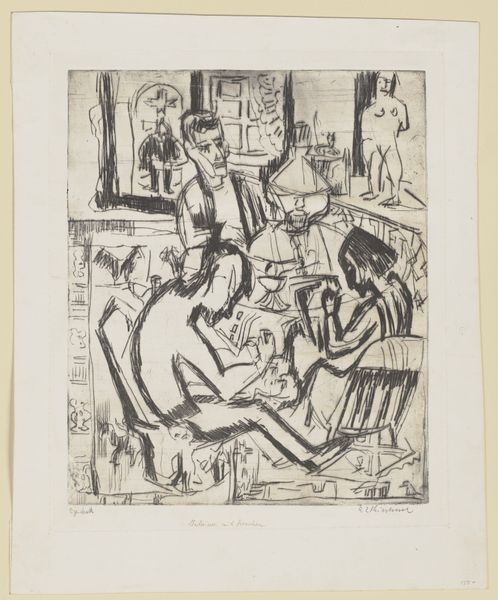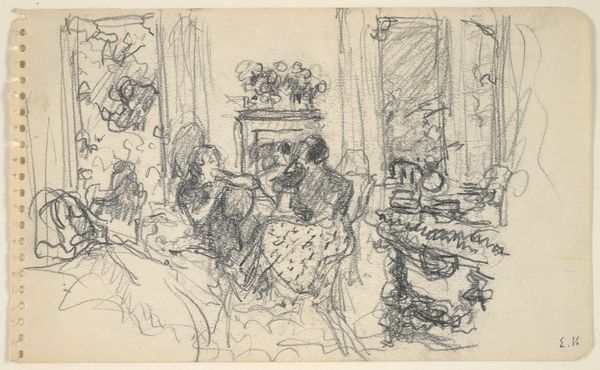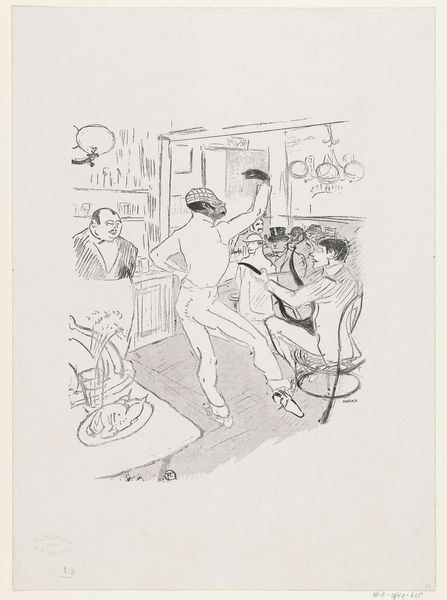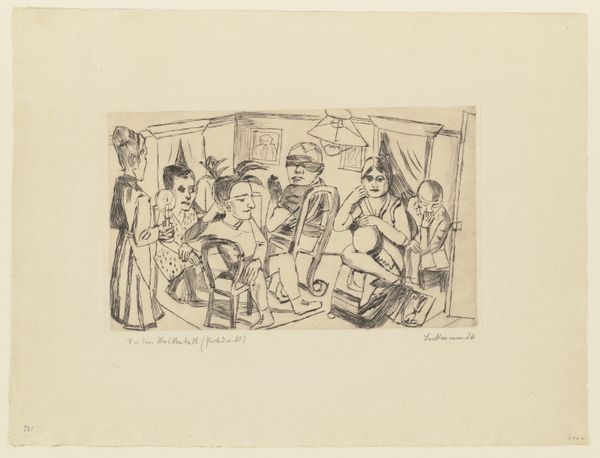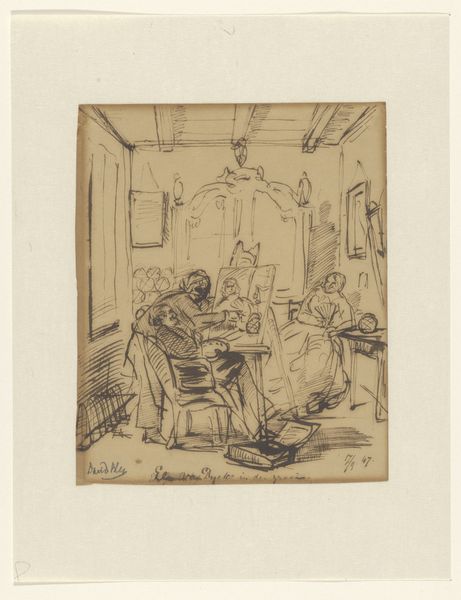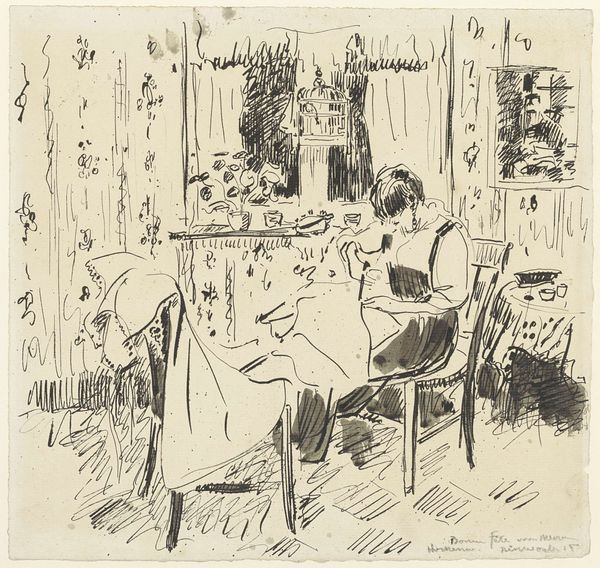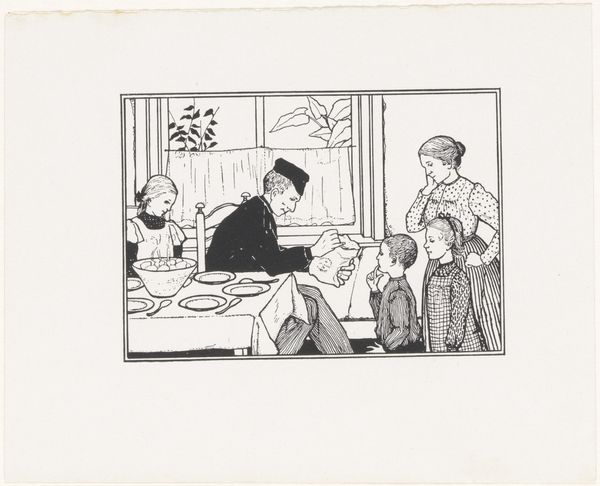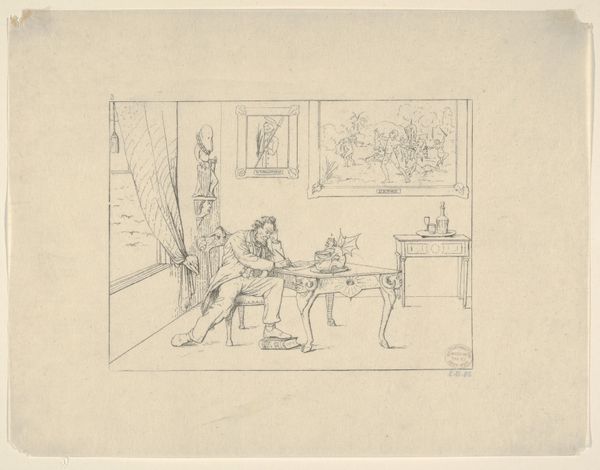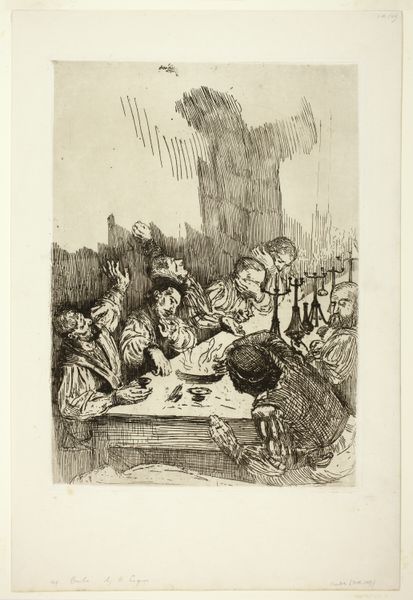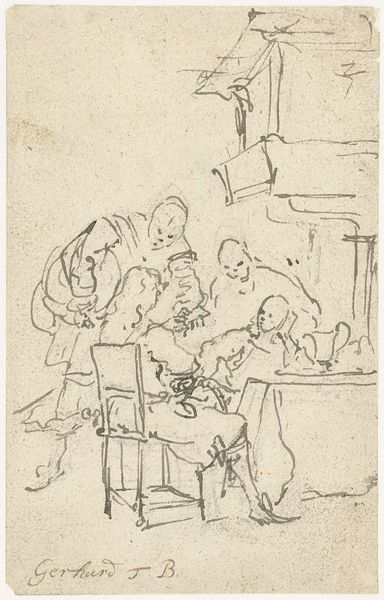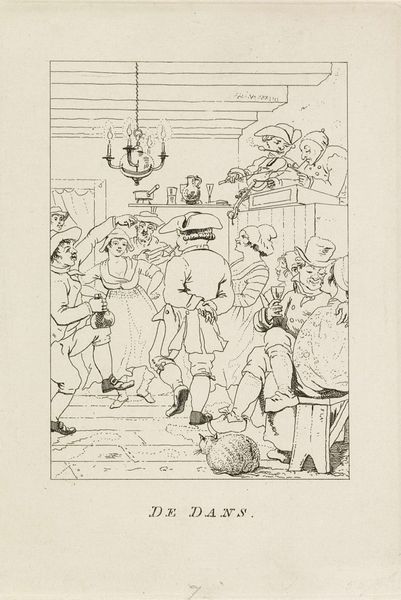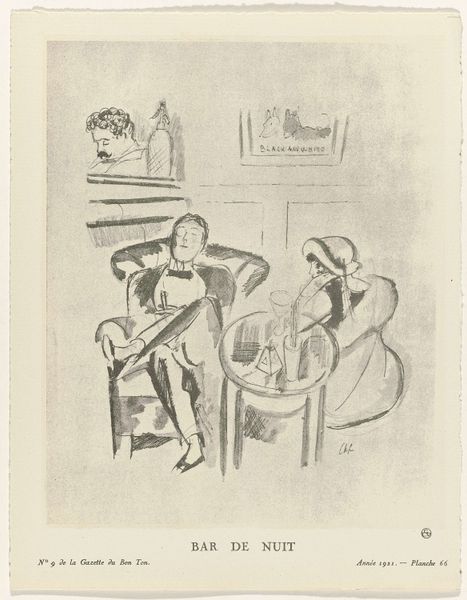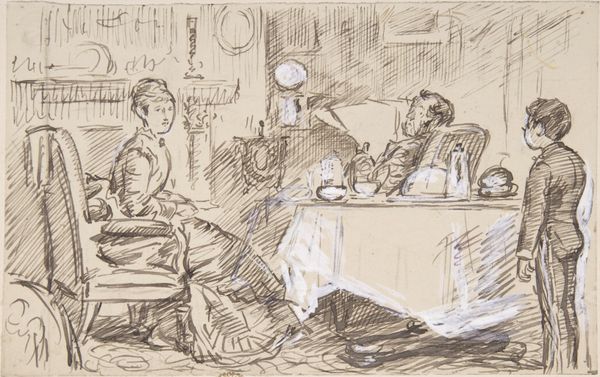
drawing, ink, pen
#
drawing
#
narrative-art
#
mechanical pen drawing
#
pen illustration
#
pen sketch
#
caricature
#
ink line art
#
linework heavy
#
ink
#
wedding around the world
#
ink drawing experimentation
#
pen-ink sketch
#
pen work
#
pen
#
storyboard and sketchbook work
#
modernism
Dimensions: height 240 mm, width 303 mm
Copyright: Rijks Museum: Open Domain
Curator: This is a pen and ink drawing by Arie Martinus Luijt, titled "Spotprent op het Nederlandse leger, 1917-1918", which roughly translates to "Cartoon on the Dutch Army, 1917-1918." Editor: It has an unexpectedly lighthearted air for something created during the years of the First World War. The lines are dynamic, the composition creates an almost domestic scene… although, is that a lion holding court? Curator: Indeed. The composition hinges on the visual juxtaposition between the stoic soldier on the left and the overstuffed, decadent figure on the right, flanked by an anthropomorphic lion. Editor: Symbolically, the lion usually signifies courage and strength, but here, its gestures feel almost subservient, pawing at the man with the pipe as if for approval or a treat. The military man seems resigned, perhaps weighed down by the texts under his feet; their titles are frustratingly illegible to me! Curator: Precisely. Consider how the artist renders texture – the dense, almost frantic linework that constitutes the right figure’s armchair versus the starker lines defining the soldier. It establishes a dichotomy of form itself. Editor: Good point. Beyond the formal contrast, consider what the "Dutch Lion," that age-old national symbol, represents in this scene. It's lounging, even complicit in this display of... excess? The artist creates a critical narrative through recognizable symbols. Curator: And notice how Luijt framed everything? The interior architecture lends a claustrophobic affect, mirroring the sociopolitical conditions. The line quality creates the scene's entire tone, it could not be accomplished with solid shapes. Editor: Yes, the oppressive nature of symbolism feels immediate when it's caged by line work and domestic confinement. Overall, an accessible work with several historical dimensions lurking beneath a comedic surface. Curator: Ultimately, Luijt’s interplay of texture and implied lines transforms a relatively simple composition into a fascinating study of early 20th-century tensions.
Comments
No comments
Be the first to comment and join the conversation on the ultimate creative platform.
